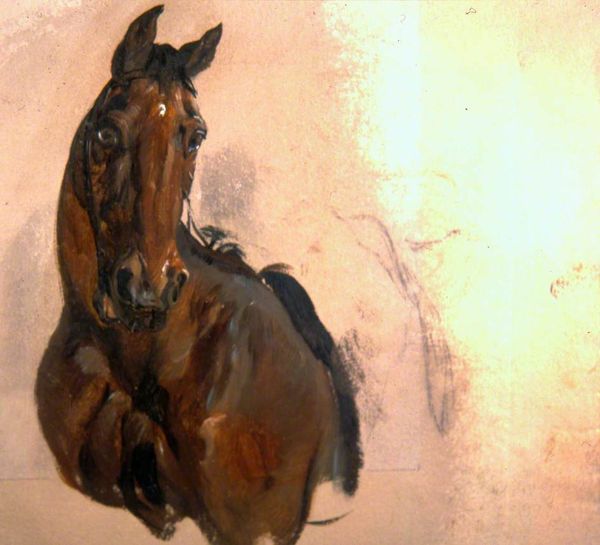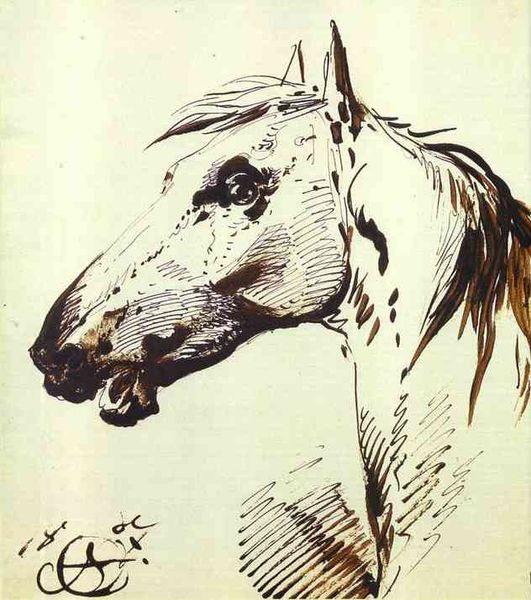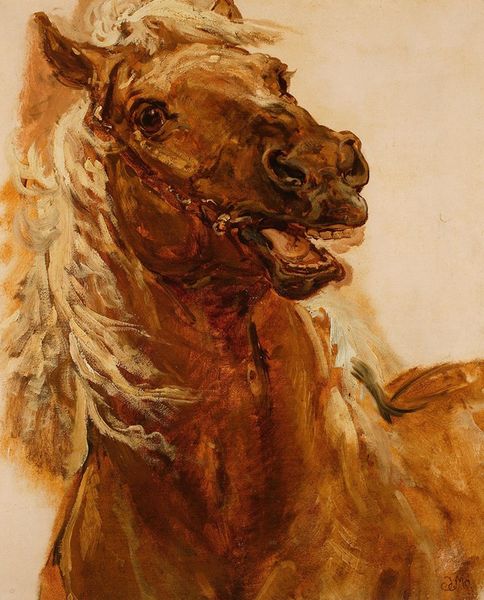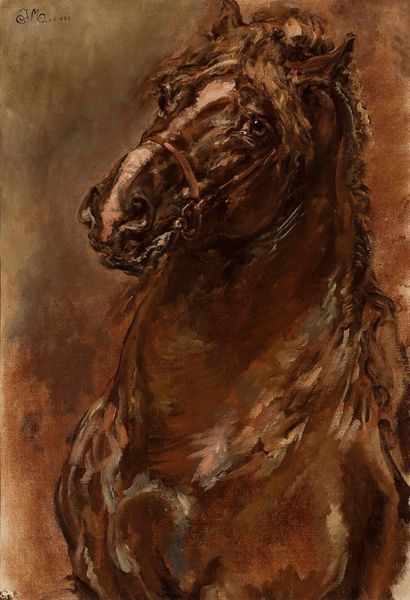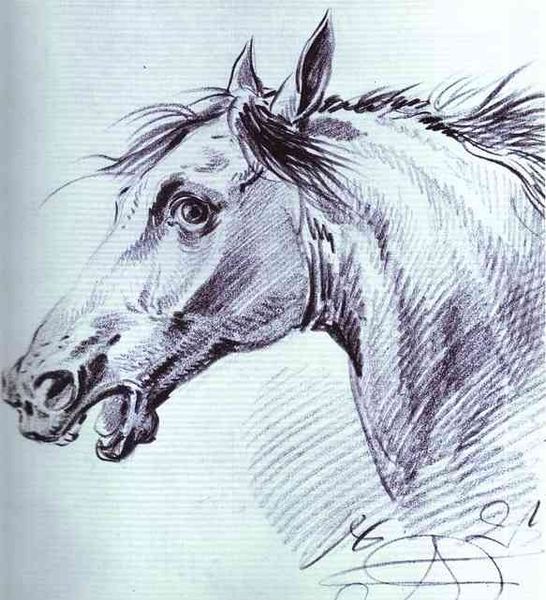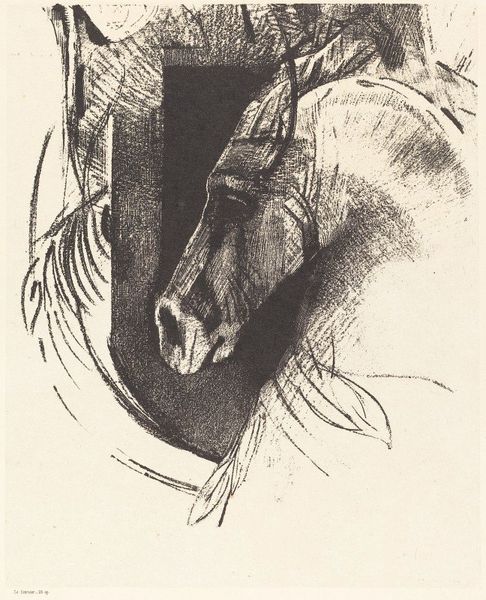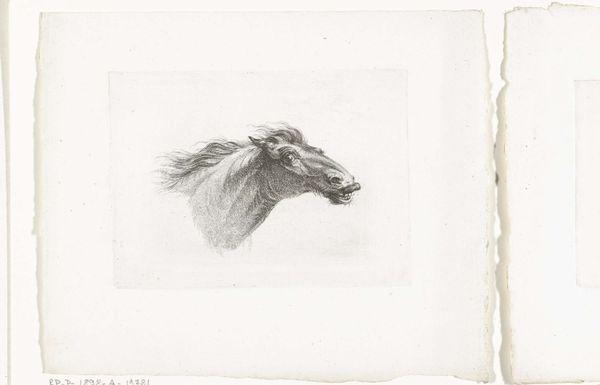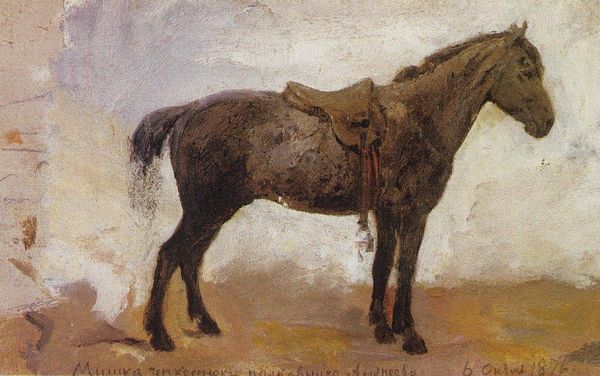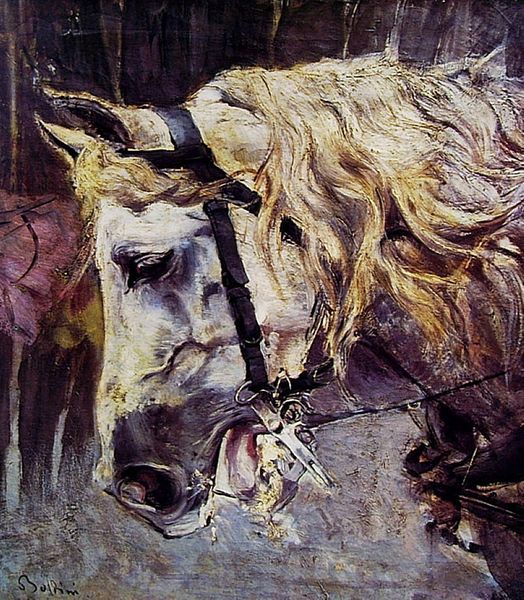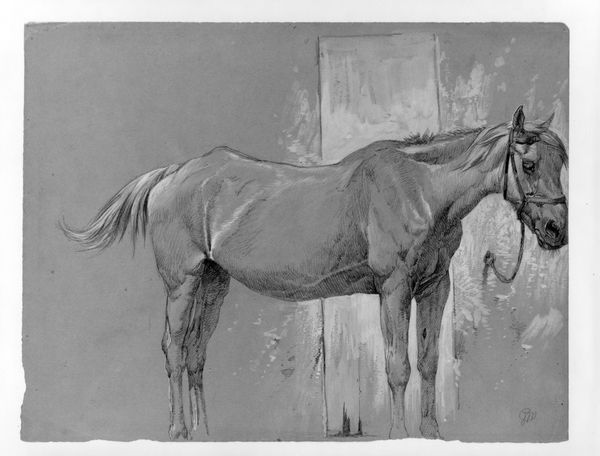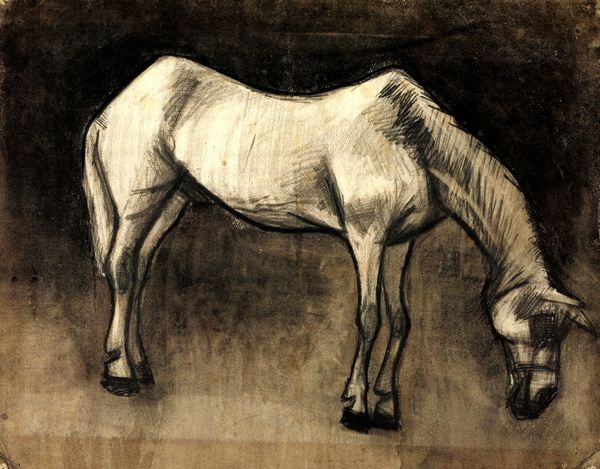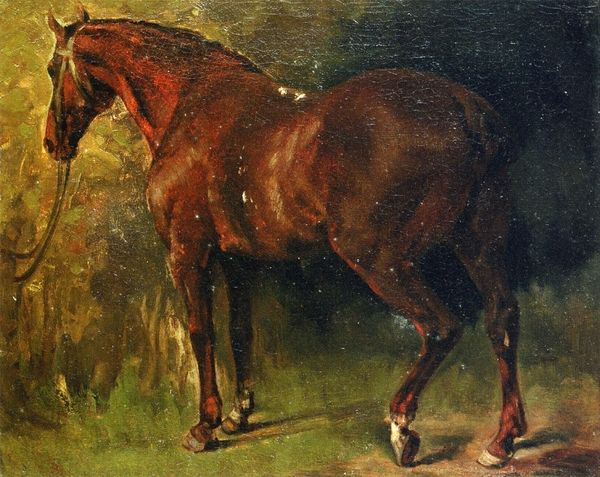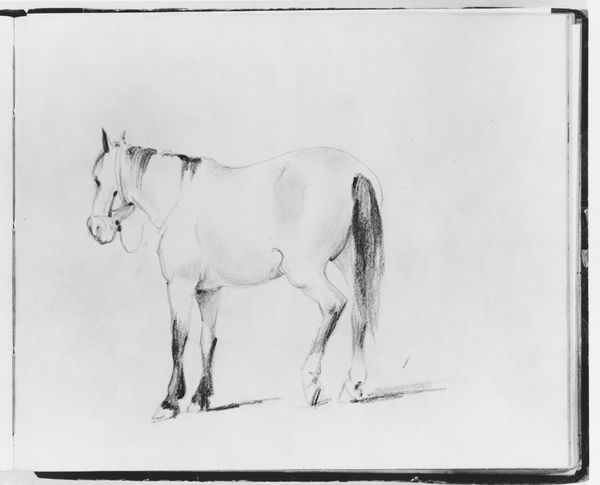
gouache, watercolor
#
portrait
#
gouache
#
animal
#
gouache
#
landscape
#
watercolor
#
horse
#
watercolour illustration
#
watercolor
#
realism
Copyright: Public domain
Curator: We're looking at George Harvey's "Horse's Head," created around 1836, rendered in watercolor and gouache. Editor: My immediate reaction? It's raw. The horse looks caught mid-snarl. The loose brushwork makes the animal appear powerful, yet somehow vulnerable. Curator: That vulnerability, I think, reflects the changing role of animals, and of horses in particular, during the rise of industrial capitalism. Equine labor was essential, but the relationship was also exploitative, something frequently portrayed in art of the era. This watercolor captures a creature on the cusp of disappearing from everyday life and entering the realm of romanticized memory. Editor: I'm struck by the choice of materials—watercolor and gouache. These media offer speed and portability, perhaps reflecting a demand for quick studies that served some wider purpose, like reproductive prints for the burgeoning middle class. Also notice how the visible strokes add texture and weight to an otherwise ethereal medium. Curator: Exactly. It’s also important to think about artistic training at this time. Depicting animals required specialized knowledge, moving beyond mere visual observation. Understanding equine anatomy would have been considered crucial by patrons and institutions of artistic patronage. Editor: The cropping is so abrupt, too. It pushes us right up against the animal's physicality, and its materiality. I wonder, was the artist interested in selling an image of power and perhaps commodification? Curator: Perhaps both power and pathos. The success of representations of animals in popular imagery helped create and cater to an audience, both solidifying certain class fantasies and speaking to a more democratic cultural landscape. Editor: A good reminder to consider the making of images in addition to their message. Looking closely, it is evident the physical presence of the animal being transformed through material application in the print. Curator: Agreed. Thinking about it now, it reveals so much about shifting values of labour and artistry at the beginning of the industrial era. Editor: Definitely. There’s a certain poignancy to thinking about both its construction, but its impact on the world as well.
Comments
No comments
Be the first to comment and join the conversation on the ultimate creative platform.
